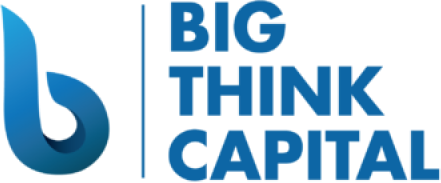Navigating the Federal Reserve’s Recent Interest Rate Decision: Impacts and Strategies for Small Business Funding
Estimated Reading Time: 5 minutes
- Understand how interest rate decisions impact small business financing.
- Explore diverse funding options available for small businesses.
- Build relationships with lenders for better financing opportunities.
Table of Contents
- Understanding the Federal Reserve’s Recent Decision
- Impacts on Small Business Financing
- Strategies for Small Business Owners
- Practical Takeaways for Small Business Owners
- Conclusion
- FAQ
Understanding the Federal Reserve’s Recent Decision
The Federal Reserve’s decision to hold interest rates steady stems from its ongoing analysis of inflation, economic growth, and other financial indicators. Following 10 consecutive rate increases since 2021, the central bank aims to balance controlling inflation with fostering economic growth. According to a recent report from the Federal Reserve, inflation rates have shown signs of stabilizing, albeit at levels that still warrant caution.
- Inflation Trends: The Consumer Price Index (CPI) increased by an annual rate of 3.7% as of September 2024, down from 6.4% a year prior.
- Growth Outlook: Economic growth slowed but remained positive, with the GDP increasing by 2.2% in Q3 2024, compared to 1.8% in the previous quarter.
- Labor Market: The labor market has shown resilience, but uncertainty remains around wage pressure and job growth, which can further influence Fed policy.
This pause signifies a recognition of the current economic landscape and aims to provide businesses with a more predictable environment for planning their financial futures.
Impacts on Small Business Financing
The Federal Reserve’s interest rate decisions significantly affect borrowing costs and lending availability. Understanding these impacts can help small business owners make informed financing decisions.
Increased Credit Accessibility
Increased interest rates often make borrowing more expensive, which can deter small businesses from seeking loans. With the Fed’s recent pause, there may be a more favorable environment for securing loans and credit lines. Banks and alternative lenders are likely to become more competitive in offering attractive rates to small businesses.
Cost of Existing Debt
For businesses that rely on variable-rate loans, the interest rate freeze can translate to more manageable monthly payments. However, businesses with high levels of existing debt need to remain vigilant about their obligations, as future shifts in policy could reverse these advantages.
Attraction of Alternative Financing
As traditional lending may become more favorable again, alternative financing options remain pivotal for small businesses requiring immediate access to capital. Products like working capital advances, merchant cash advances, equipment financing, and lines of credit from alternative lenders can provide quicker access to funds compared to traditional bank loans, which may still require lengthy approvals.
Strategies for Small Business Owners
As interest rates stabilize, small business owners should proactively adopt strategies that align with the current economic climate. Here are three key strategies to employ:
Assess Your Financing Needs
Before pursuing funding, conduct a thorough assessment of your current financial position. Understand how much capital you need and for what purpose. Whether for expansion, purchasing inventory, or covering operational costs, clarifying your funding goals will enable you to approach lenders with a strong case.
- Create a comprehensive business plan that outlines your funding needs and potential returns.
- Analyze cash flow to project your ability to service any new debt.
Explore Diverse Funding Options
While interest rates are paused, take the time to explore multiple funding avenues. Each option comes with its own set of requirements, advantages, and disadvantages. Consider reaching out to funding experts who can help you navigate these alternatives.
- Working Capital Advances: Ideal for businesses needing quick access to funds based on future sales.
- Equipment Financing: Suitable for businesses looking to acquire new machinery or tools without significant upfront costs.
- SBA Loans: These government-backed loans offer long repayment terms and lower interest rates, making them an attractive option for eligible businesses.
Build Relationships with Lenders
Establishing strong relationships with lenders can facilitate more favorable financing options in the long run. Regular communication and transparency about your financial health can build trust and open up opportunities for preferred rates and easier access to capital.
- Schedule regular check-ins with your bank or alternative lender.
- Attend local networking events to meet potential financing partners.
Practical Takeaways for Small Business Owners
- Understand the Economic Landscape: Stay informed about the Federal Reserve’s policies and broader economic trends. This knowledge enables you to make proactive financing decisions.
- Diversify Your Funding Sources: Don’t rely solely on one type of financing. Explore various funding options that align with your business’s needs.
- Prioritize Financial Planning: Take time to create or update your business plan. Well-thought-out financial projections can equip you with the data required to approach lenders confidently.
Conclusion
The Federal Reserve’s recent decision to pause interest rate hikes signals a stabilizing moment in the economic landscape. For small businesses, this presents opportunities to revisit financing options and potentially secure more favorable terms. Whether you’re considering a working capital advance, an SBA loan, or alternative financing solutions, now is the time to assess your strategies in light of the current financial climate.
As you continue to navigate the complexities of small business financing, remember that resources are available to help you succeed. Speak with a funding expert at Big Think Capital today and explore how we can assist you in securing the funding you need to thrive in 2025.
To learn more about our funding options and to get started on your journey toward financial success, visit us at bigthinkcapital.com. Your path to funding begins here.
FAQ
What impact do interest rates have on small business loans?
The impact of interest rates on small business loans includes changes to the cost of borrowing. Higher rates typically increase the cost of loans, while lower rates can make borrowing more manageable.
How can small businesses prepare for potential economic changes?
Small businesses can prepare for potential economic changes by creating robust financial plans, diversifying funding sources, and maintaining open communication with lenders.
What types of financing should small businesses consider?
Small businesses should consider various financing options such as working capital advances, equipment financing, and SBA loans to meet their unique funding needs.






